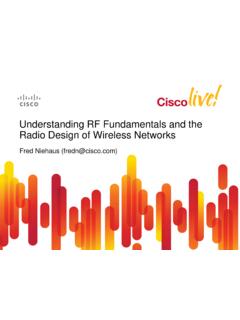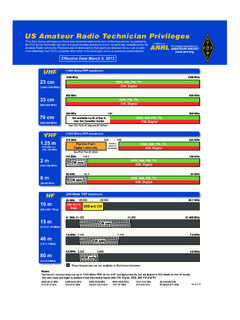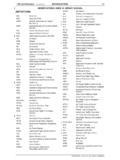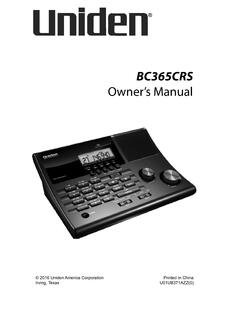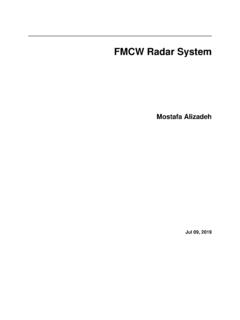Transcription of A BROAD OVERVIEW OF BROADCASTING LEGISLATION
1 A BROAD OVERVIEW OF BROADCASTING LEGISLATION IN INDIA1 Compiled by Siddharth Narrain, Alternative Law Forum, Bangalore2 With contributions from Rohan Saha and Nikhila Reddy, NALSAR University of Law, Hyderabad And inputs from Ammu Joseph 1 Updated up to mid-July 2008 2 Alternative Law Forum, Bangalore ( ) INTRODUCTION3 With rapidly changing technologies, and increasing business investments, the broadcast sector has become the site of contention between various interests broadcast companies, the government, public interest groups, community radio and television channels, and an increasingly diverse audience that has been broadly categorized as the public.
2 An important aspect of this tussle is the legal regulation of both existing and emerging technologies. This compilation attempts to examine the existing legal framework that applies to various broadcast technologies that are currently in use in India. The statutory basis of government monopoly of the broadcast sector, which was widespread until the emergence of satellite television in the 1990s, can be traced to the 123 year-old Indian Telegraph Act of 1885. The Act states that the Central Government has the exclusive privilege of establishing, maintaining, and working telegraphs within The Act and its subsequent amendments define telegraph broadly to include most modern communication devices irrespective of their underlying Judicial decisions have also held that the term telegraph includes the term telephone, television, radio , wireless, mobile and video equipment.
3 6 The Act authorizes the Central Government to take temporary possession of a telegraph in cases involving public emergencies or public Section 5(2) enables the government to lawfully intercept telegraph messages on certain grounds. These include India s sovereignty and integrity, state security, friendly relations with foreign states, public order, and preventing the commission of an The Act empowers the government to revoke a telegraph license for breach of any terms and conditions or for a default in making license-fee 3 See Vikram Raghavan, Communications Law in India, New Delhi: Lexis Nexis Butterworths, 2007.
4 4 Section 4(1) 5 .any appliance, instrument, material, or apparatus used or capable of use for transmission or reception of signs, signals, writing, images and sounds or intelligence of any nature by wire, visual, or other electro-magnetic emissions, radio waves or Hertzian waves, galvanic, or magnetic waves 6 Section 3(1AA). However the physical possession of radio and wireless equipment is regulated by the Indian Wireless Telegraphy Act, 1933. 7 Section 5(1) 8 Section 5(2) 9 Section 8 Though the Telegraph Act does not explicitly define telecommunications service and BROADCASTING service , the Telecom Regulatory Authority of India Act, 1997, defines communication service in s 2(1)(k) as.
5 Service of any description (including electronic mail, voice mail, data services, audio-text services, video-text services, radio paging, and cellular mobile telephones services) which is made available to users by means of an transmission or reception of signals, writing, images, and sounds or intelligence of any nature, by wire, radio , visual or any other electronic means but shall not include BROADCASTING services. [Provided that the Central Government may notify other service to be telecommunication service including BROADCASTING services.] Though this section expressly excludes BROADCASTING from this definition, the directive authorizes the government to notify BROADCASTING services to be a telecommunication This notification gave TRAI the authority to regulate BROADCASTING and cable services in India.
6 The license required for BROADCASTING (the Wireless Operating License) is given by the Wireless Planning and Coordination Committee (WPC) Wing of the Ministry of Communication and Information and Technology, while the Ministry of Information and BROADCASTING (MIB) gives a Grant of Permission Agreement. Most radio and television services are also regulated by the Indian Wireless Telegraphy Act (No 17 of 1933), as they constitute wireless communications . Section 2(2) and Section 3 regulate wireless communication by requiring users of various types of wireless equipment to obtain wireless licenses for possessing and using the equipment.
7 These licenses are granted by the WPC (Wireless Planning & Coordination Authority) Wing of the Department of Telecommunications (DoT) Therefore, to offer most kinds of BROADCASTING services, a BROADCASTING company must obtain two types of licenses: A Grant of Permission (GOPA) to offer broadcast services issued by the Ministry of Information and BROADCASTING under the Telegraph Act A wireless operating license from the WPC (Wireless Planning & Coordination Authority) Wing of the Ministry of Communication and Information Technology under the Wireless Telegraphy Act radio SERVICES: Terrestrial radio services can be divided into two main categories: AM radio that uses medium or short wave frequency bands, and FM that uses VHF frequencies in the 88 MHz to 108 MHz band.
8 AM radio is offered only by AIR while FM radio , which works 10 See, Ministry of Communications, BROADCASTING Services and Cable Services Notified as Telecommunication Service , S044 (E), Fno13-1/2004-Restg, 9 January 2004. on line-of-sight principles and can be clearly received within a local area, is offered by both AIR and private channels. FM radio AIR began FM broadcasts in Madras on 23 July 1977. FM radio was opened to private players in 1999. The Ministry of Information and BROADCASTING invited bids for licenses to operate 140 FM stations in 40 cities.
9 In March 2000, the government short-listed 29 applicants for licenses to operate 101 FM radio stations. Upon further screening, the government issued letters of intent to 93 stations. Ultimately, FM licenses were granted to 16 companies to operate 37 channels. The initial FM radio licenses were valid for ten years and licensees were required to submit performance bank guarantees equivalent to a year s license fee to ensure that they carried out their license obligation. Second Round of FM Licenses Many of the FM stations that were licensed were financially unsuccessful and could not meet the license fee requirements.
10 They soon demanded a reduction in license fee and change in the prevailing licensing network. The MIB then constituted the radio Broadcast Policy Committee under the chairmanship of Amit Mitra, Secretary General, FICCI, on 24 July 2003 to make recommendations for Phase II of FM licensing, and to study the desirability and implications of making modifications in the licensing regime of Phase I licenses. The committee called for revisions to the prevailing license fee structure for FM licenses, and recommended the introduction of an annual revenue sharing arrangement that would require FM licensees to pay 4 per cent of their gross revenue as license fees.
